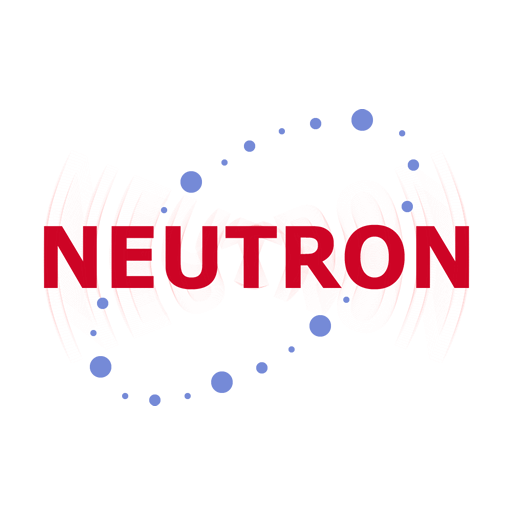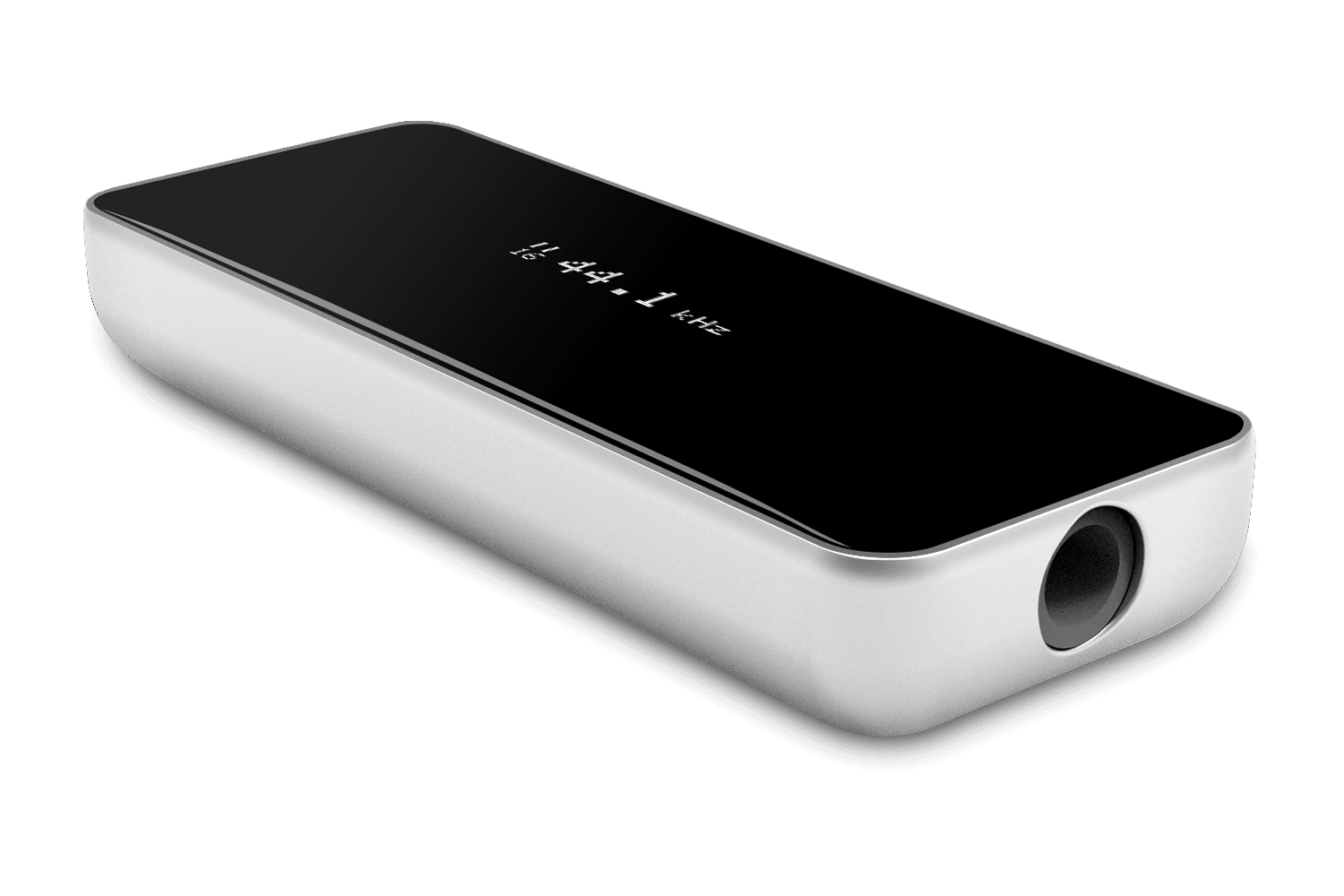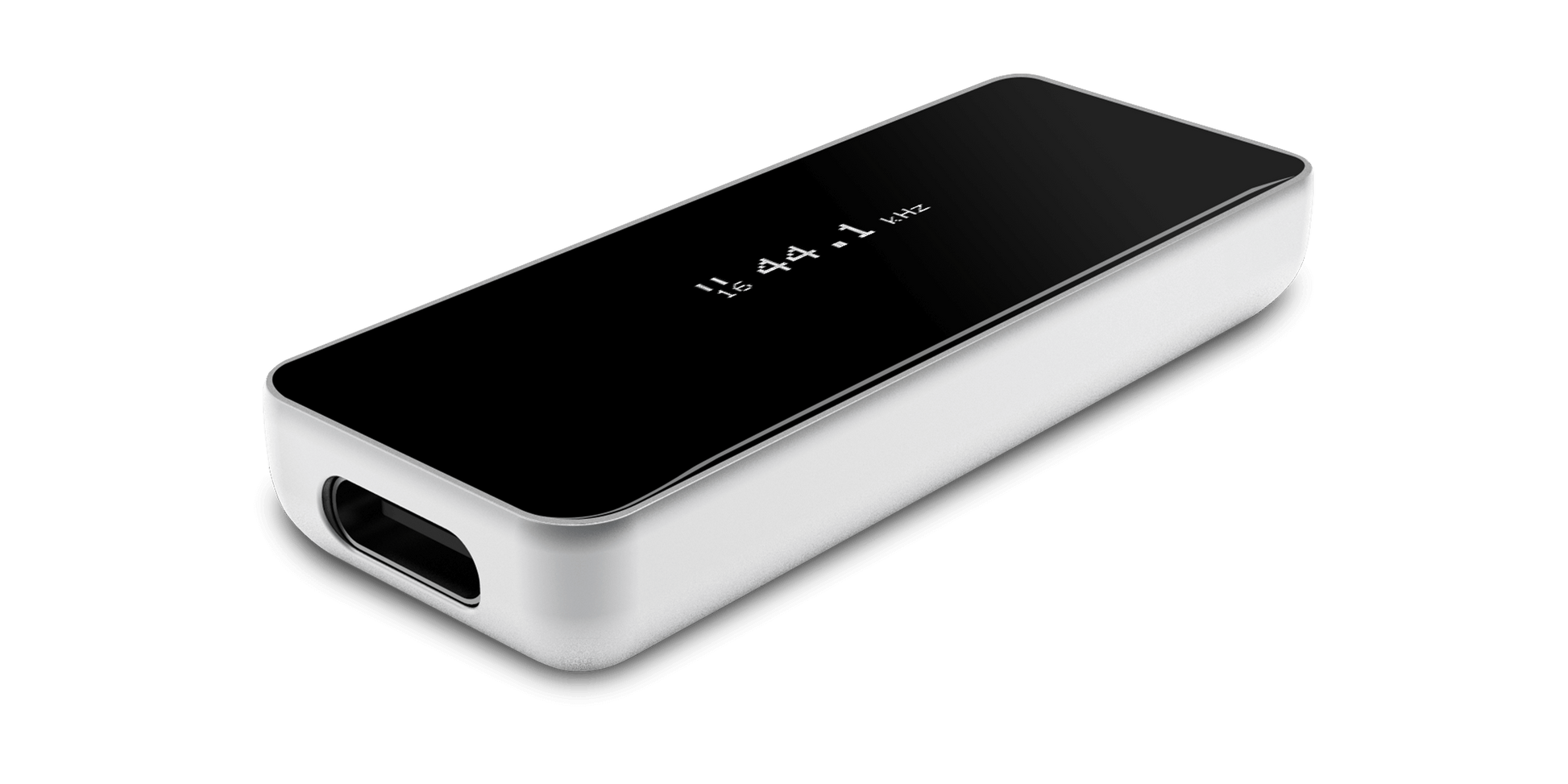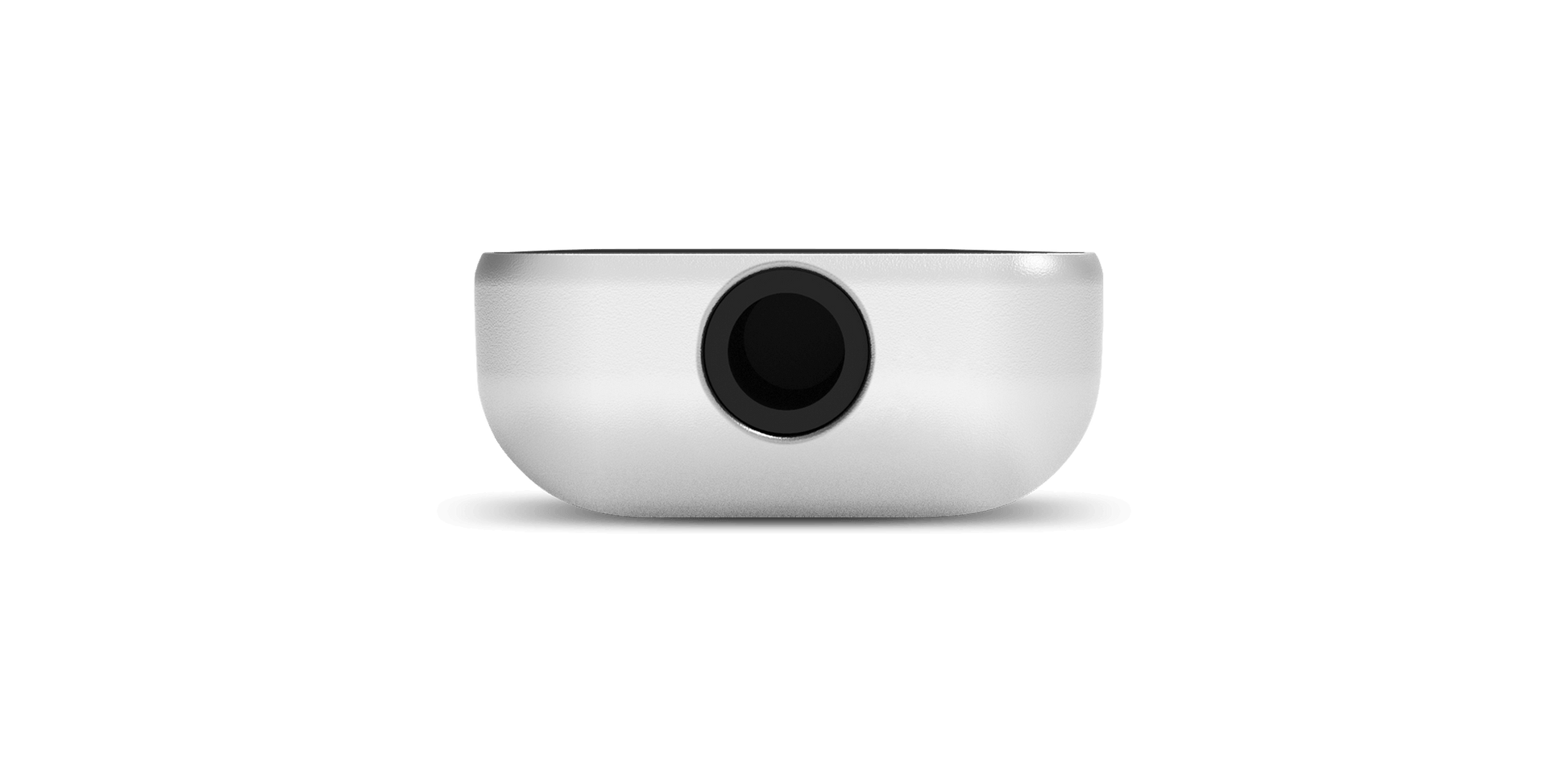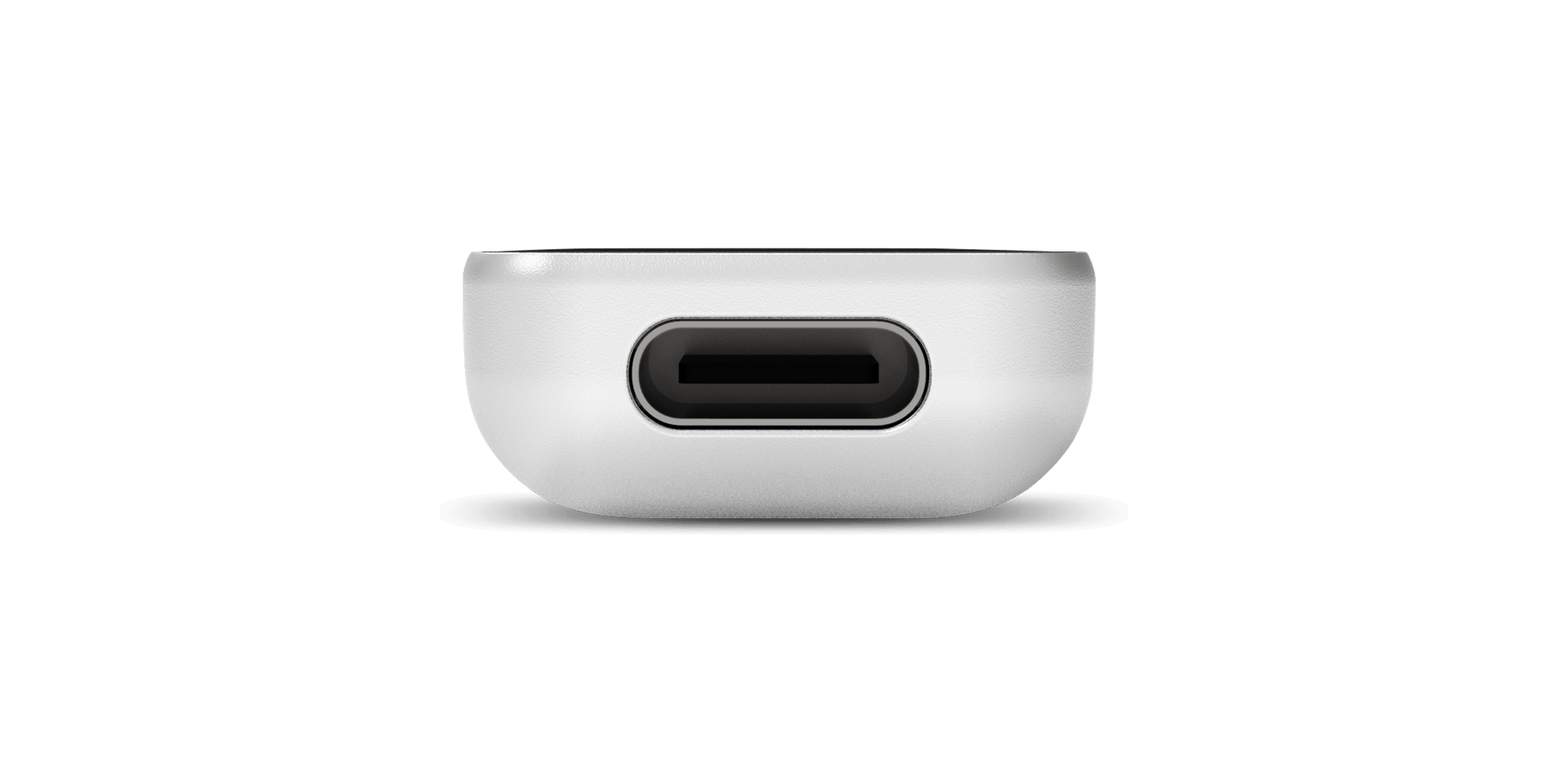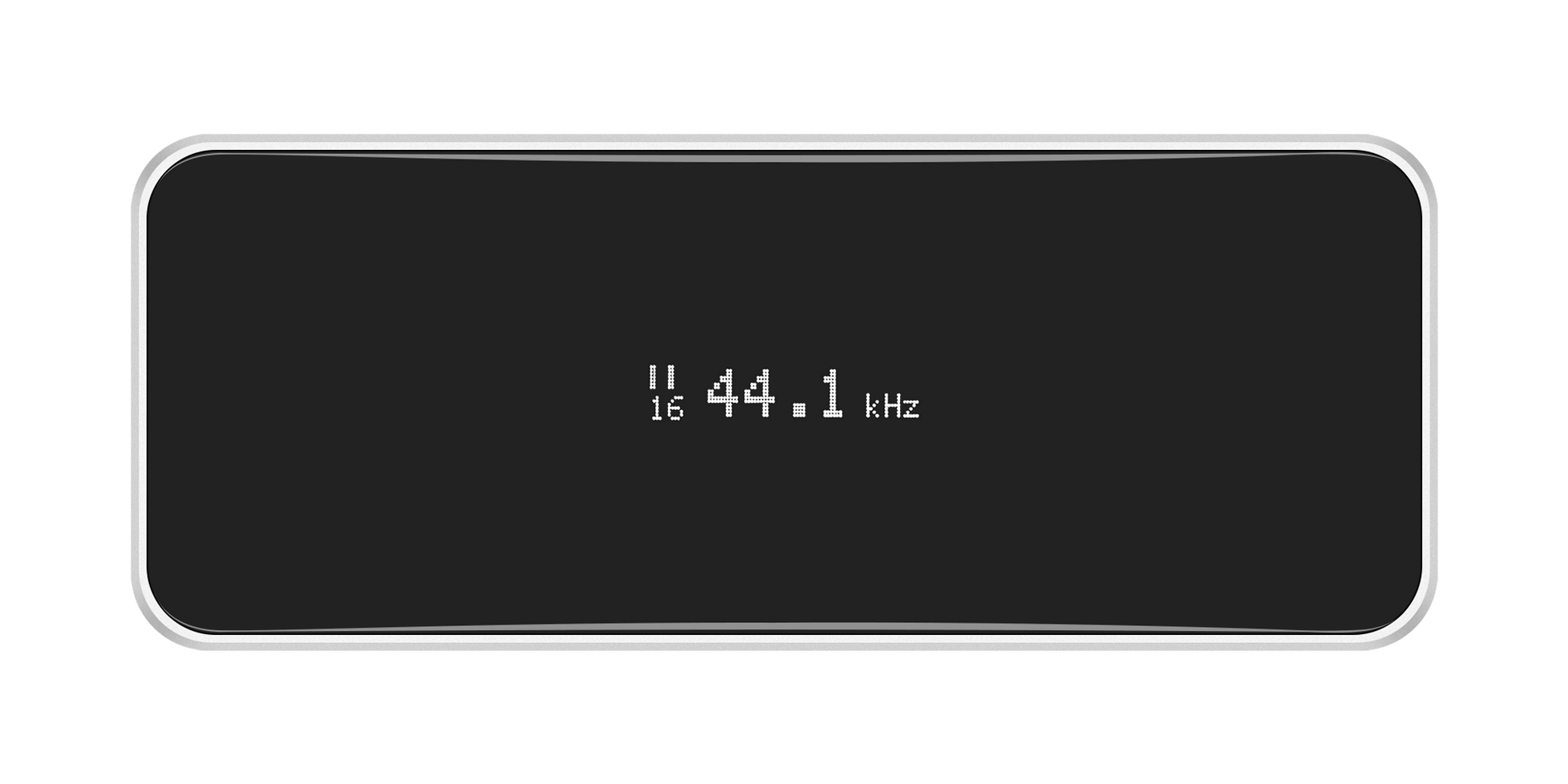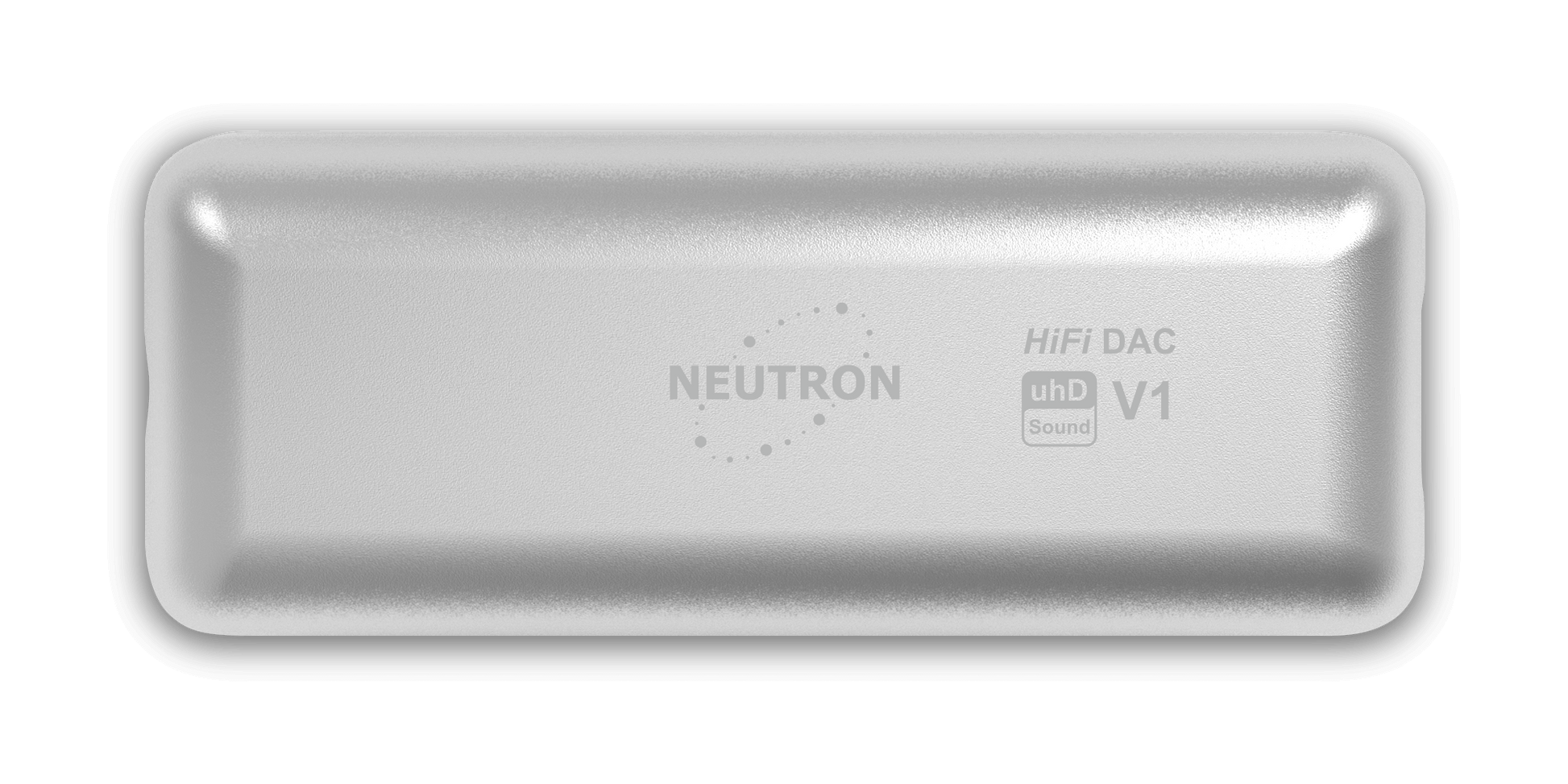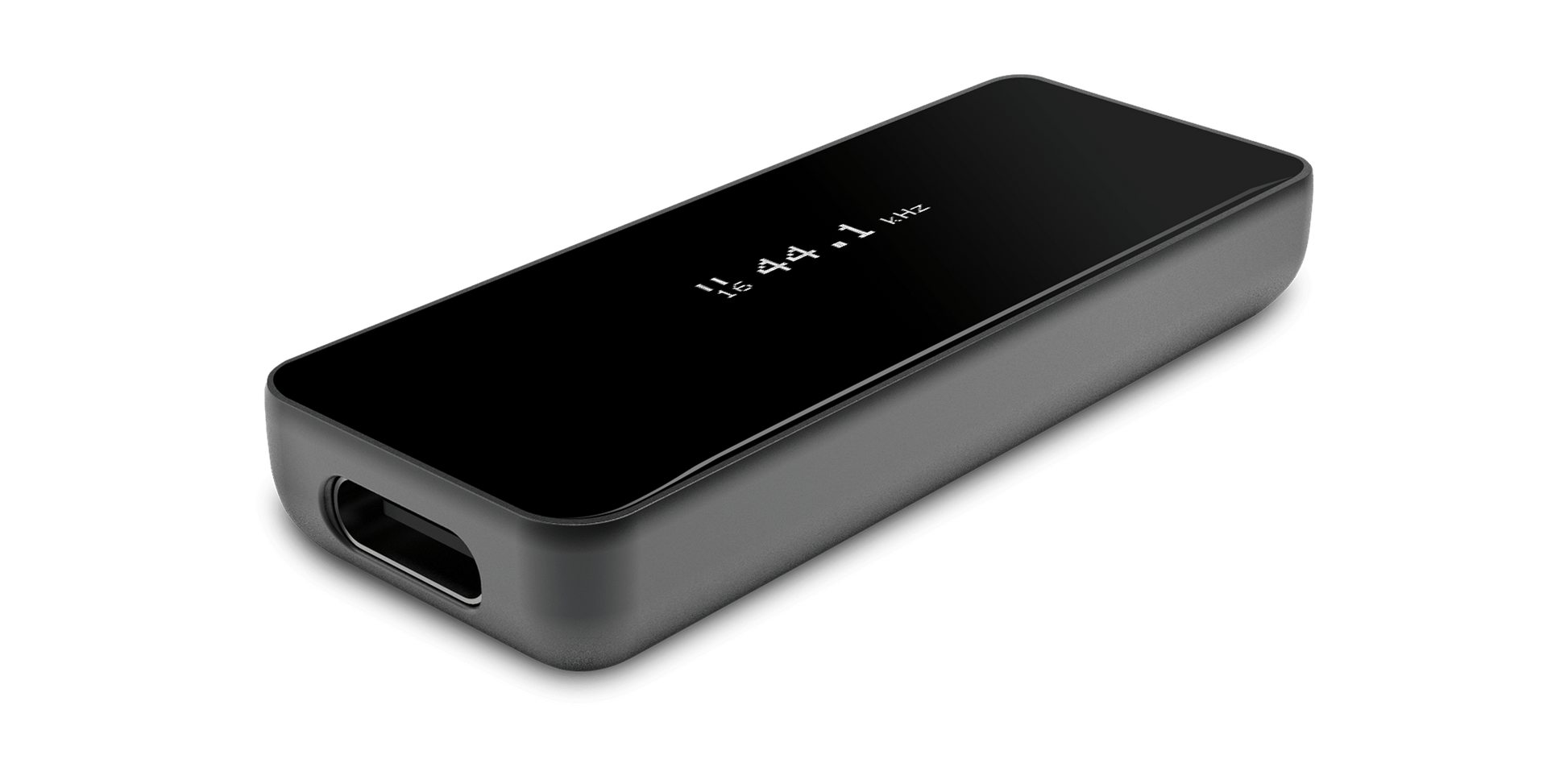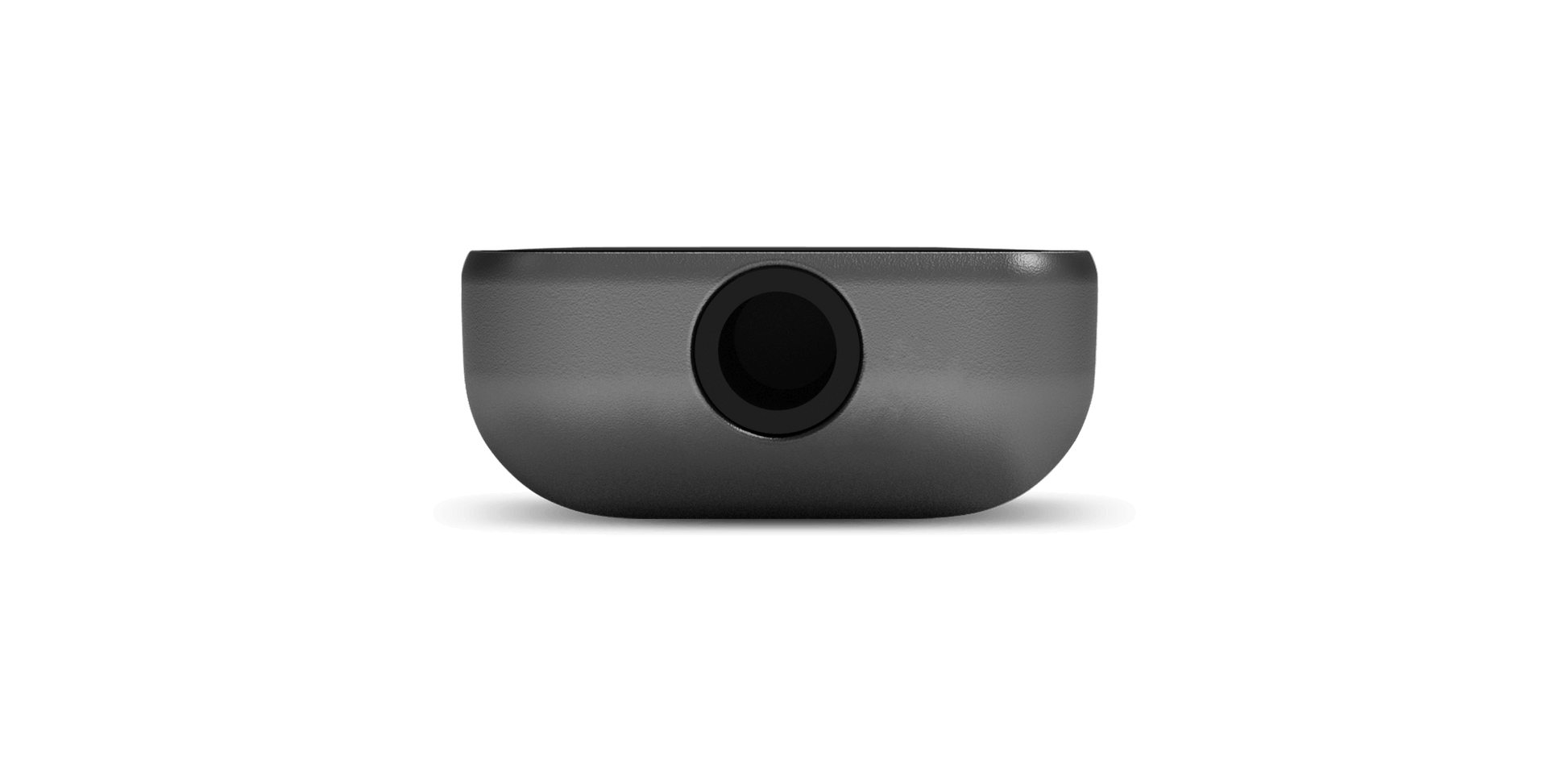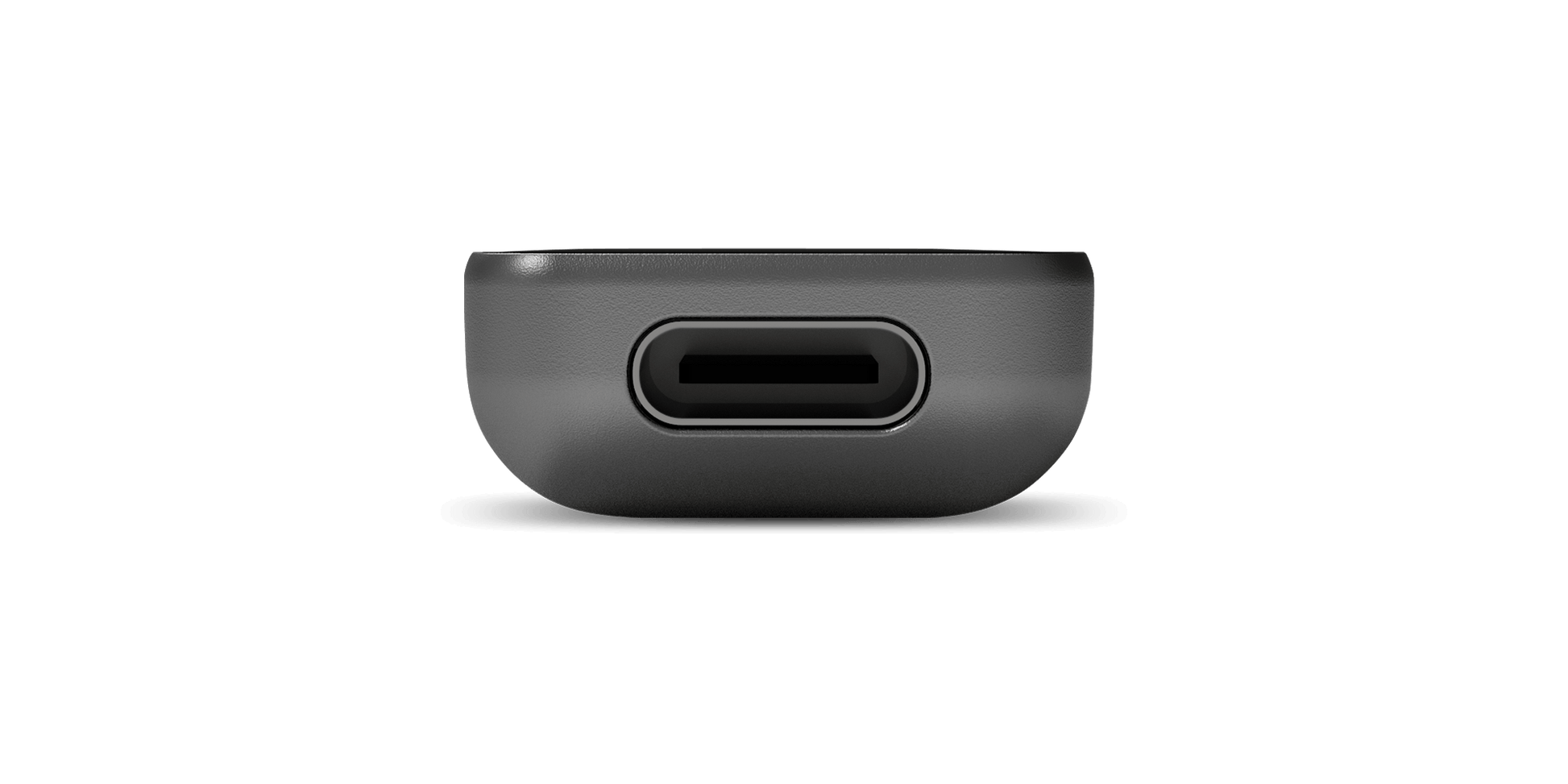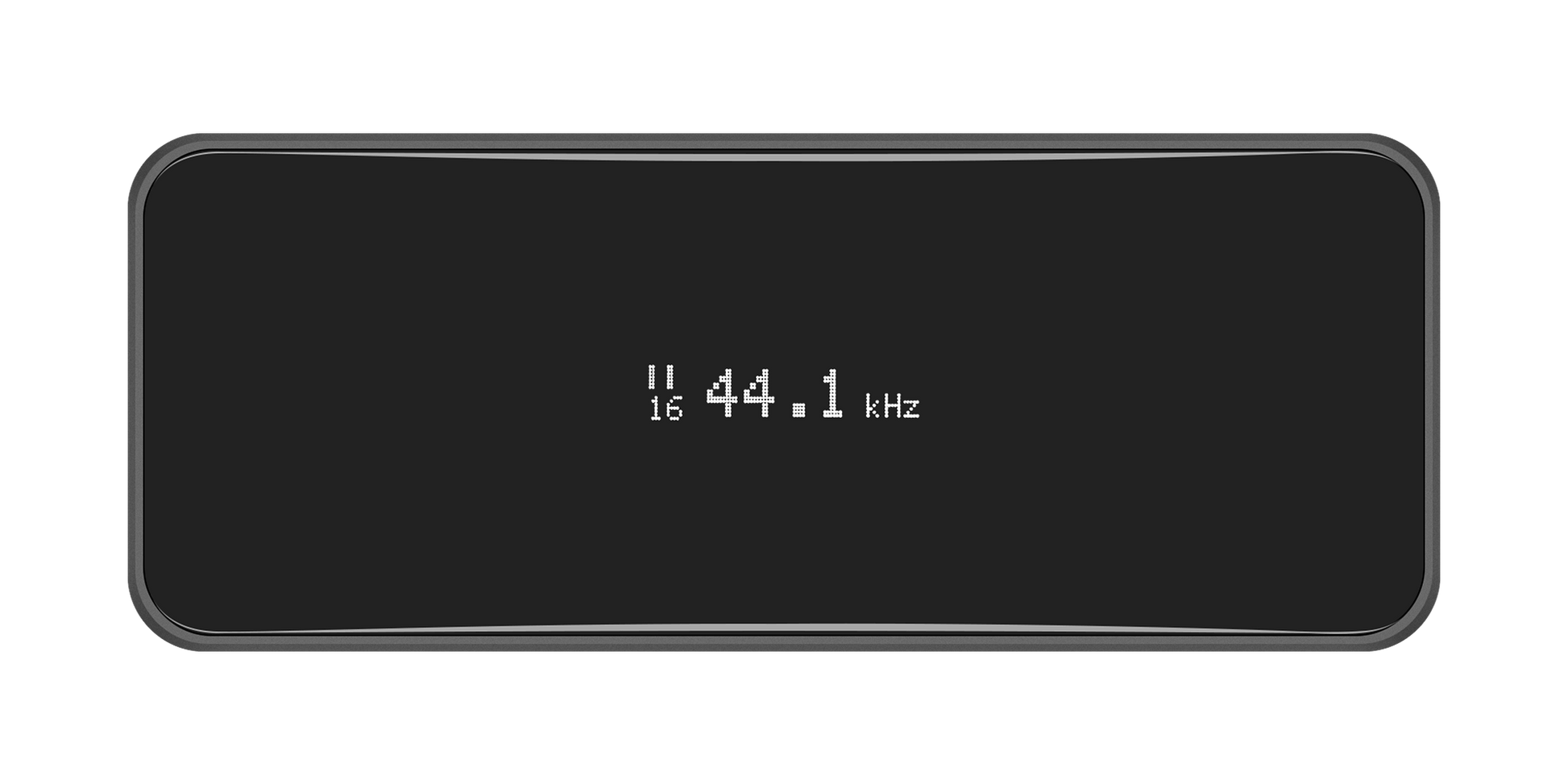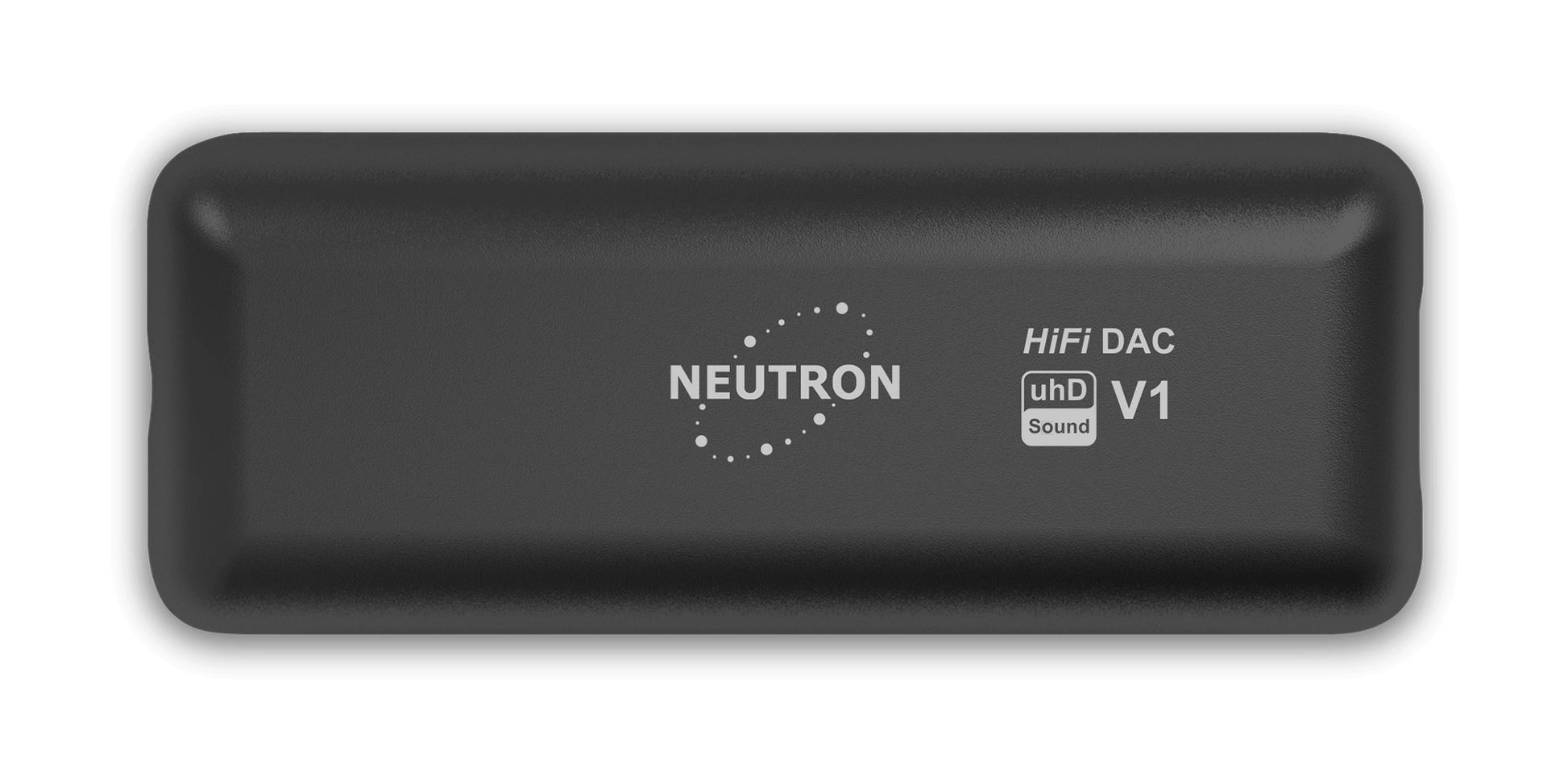Neutron Code Store
Neutron HiFi™ DAC V1 | DAC USB portatile: amplificatore per cuffie e preamplificatore con DSP
Neutron HiFi™ DAC V1 | DAC USB portatile: amplificatore per cuffie e preamplificatore con DSP
Impossibile caricare la disponibilità di ritiro
Neutron HiFi™ DAC V1 è un DAC USB ad alta risoluzione, con amplificatore per cuffie e preamplificatore di livello audiophile, dotato di DSP integrato avanzato: equalizzatore grafico (PEQ), crossfeed, FRC, surround e bilanciamento lossless. Combina portabilità, prestazioni e versatilità d'uso. È uno dei DAC USB più precisi e musicali della sua categoria, come dimostrato da numerose recensioni. L'eccellenza tecnica è comprovata dall'acclamato forum Audio Science Review. Scopri la descrizione completa del dispositivo sulla pagina dedicata .
Capacità del formato audio:
- PCM fino a 32 bit/384 kHz
- DSD64 - DSD256 (DSD nativo e DoP)
Capacità DSP:
- Equalizzatore parametrico (PEQ) da 10 a 40 bande per canale con numerosi preset
- Alimentazione incrociata
- Correzione della risposta in frequenza delle cuffie (FRC, profili cuffie AutoEq )
- Surround (Ambiophonics RACE)
- Correzione automatica del guadagno (AGC) per microfono in linea
Caratteristiche principali:
- Supporto per microfono in linea con DSP specifico per microfono
- Design a risparmio energetico , non spreca la batteria del dispositivo mobile
- Completamente verificato , incluse tutte le modalità PCM e DSD
- Multipiattaforma , senza problemi con qualsiasi host USB
- Completamente configurabile tramite l'app NConfigurator su Windows, macOS, Linux, Android, da qualsiasi luogo con l'app Web
Il DAC V1 offre una flessibilità senza pari. Usatelo come preamplificatore ad alta precisione per pilotare il vostro amplificatore, oppure collegatelo direttamente a cuffie o IEM per un ascolto immersivo. Basato sulla competenza audiofila maturata con lo sviluppo di Neutron Music Player, il DAC V1 offre una qualità audio e prestazioni eccezionali.
Il DAC V1 assorbe la minor quantità di energia possibile dal dispositivo host, quindi non consuma la batteria del dispositivo mobile e garantisce lunghe sessioni di ascolto. È progettato per offrire un'immagine sonora e un'esperienza corpose, perché non si ascoltano semplici onde sinusoidali, ma la musica, che è un segnale complesso e in continua evoluzione! Questo è confermato da numerose recensioni e dagli utenti soddisfatti del DAC V1.
Il DAC V1 è un perfetto connubio tra portabilità e prestazioni. Il suo design compatto nasconde le sue potenti capacità, che possono essere ottimizzate con NConfigurator. applicazione.
Considera di proteggere il tuo dispositivo con la custodia Neutron HiFi ™ per DAC V1.
Per ottenere le migliori prestazioni, consigliamo di utilizzare il DAC V1 con i cavi USB Neutron HiFi ™ .
Spedizione gratuita per ordini superiori a 210 $
Il prezzo include IVA e dazi doganali
Ottieni il 10% di sconto su Neutron HiFi Isolator V1
Ottieni uno sconto del 10% sul 2° cavo USB
Progettato in Europa.
Specificazione
| Funzione | Adattatore audio per audiofili da USB-C™ a jack per cuffie da 3,5 mm con funzionalità DSP estesa |
| Controllore | Serie K NXP |
| DAC | ES9219Q |
| Ingresso digitale | Presa USB-C™ |
| Uscita analogica | Jack per cuffie single-ended da 3,5 mm (placcato oro 24K) |
| Livello di uscita | 2 Vrms, 1 Vrms (opzionale tramite NConfigurator) |
| Impedenza di uscita | < 0,5Ω |
| Risposta in frequenza | Prestazioni analogiche: 0-300 kHz (tutti i componenti di frequenza 0-192 kHz vengono trasmessi senza attenuazione alla frequenza PCM massima di 384 kHz) |
| Audio USB | Asincrono (regolazione avanzata della velocità di trasferimento USB) |
| Orologio audio | Rumore di fase ultra-basso 2X SPXO: 45,1584 Mhz [44,1, 88,2, 176,4, 352,8 kHz], 49,152 Mhz [48, 96, 192, 384 kHz] |
| Canali | 2 (Stereo) |
| Bit PCM | 16, 24, 32 |
| Frequenza PCM | 44100, 48000, 88150, 96000, 176400, 191500, 352800, 384000 |
| DSD nativo | 64, 128, 256 |
| DSD su PCM (DoP) | 64, 128 |
| DSP (effetti sonori) | Equalizzatore parametrico (20/10 bande, per canale) con controllo del guadagno del preamplificatore, preset EQ grafico, correzione della risposta in frequenza (FRC) con database AutoEq, Crossfeed, Surround (Ambiophonics RACE), bilanciamento senza perdite, concatenamento di effetti DSP |
| Microfono per cuffie | Supportato (CTIA) |
| Pulsanti dell'auricolare | Supportati (Riproduzione/Pausa, Arresto, Traccia successiva/precedente, Comando vocale, Volume +/-) |
| Controlli multimediali | Accelerometro: 2 azioni personalizzabili (doppio tocco in alto/in basso o lato sinistro/destro) |
| Schermo OLED | Sì, con indicazione di rotazione automatica |
| Compatibilità | USB-C / USB Audio 2.0, Apple iPhone/iPad richiede l'adattatore Lightning-USB per fotocamera per dispositivi con porta Apple Lightning |
| Aggiornamento del firmware | Supportato (OTA tramite l'utilità Configurator) |
| Colore | Argento o grigio ferro |
| Dimensioni | 50 x 19,9 x 9,6 mm (L x P x A) |
| Peso | 13 grammi |
Per maggiori dettagli consulta la pagina prodotto del dispositivo.
Condividere
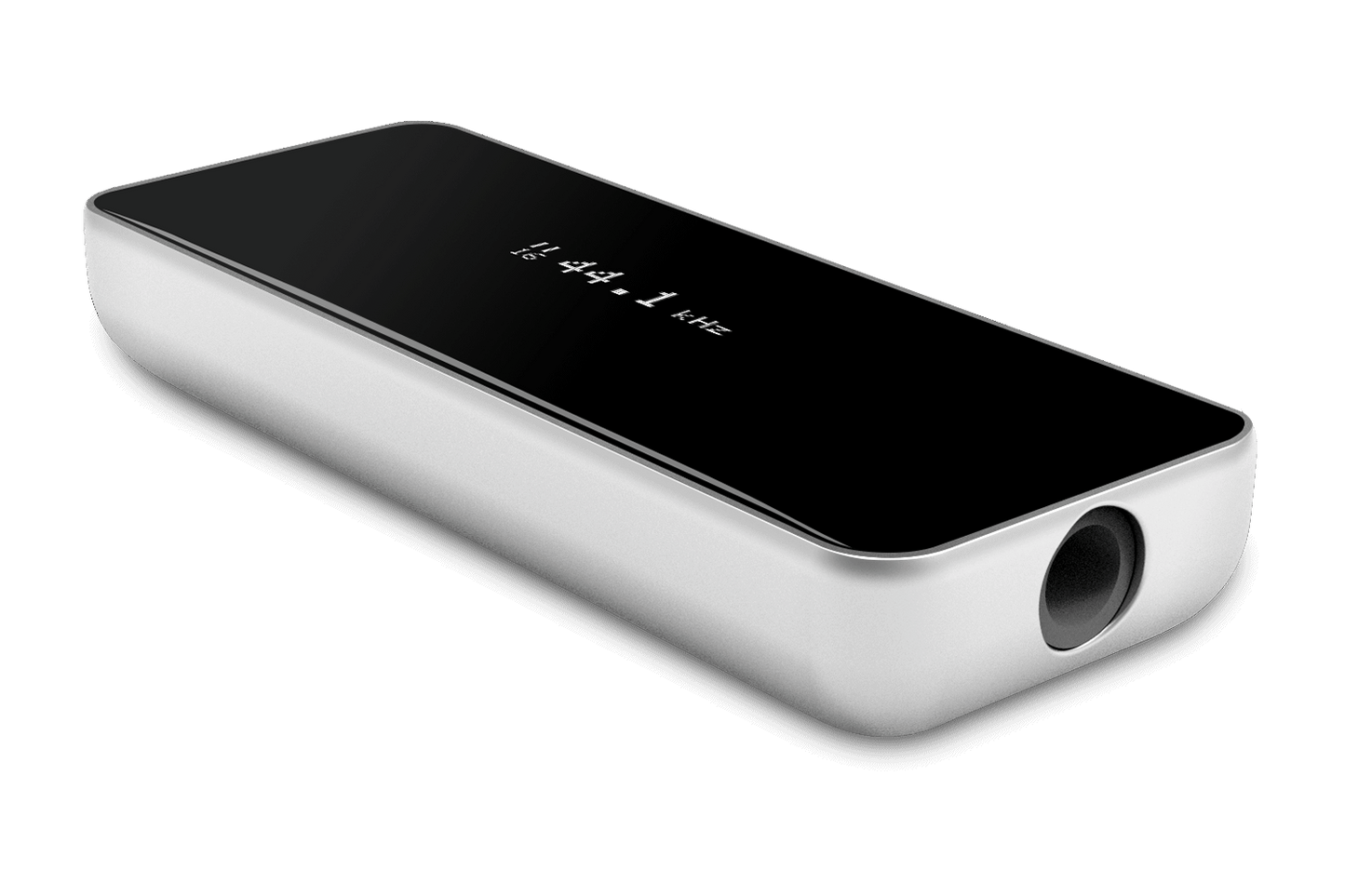
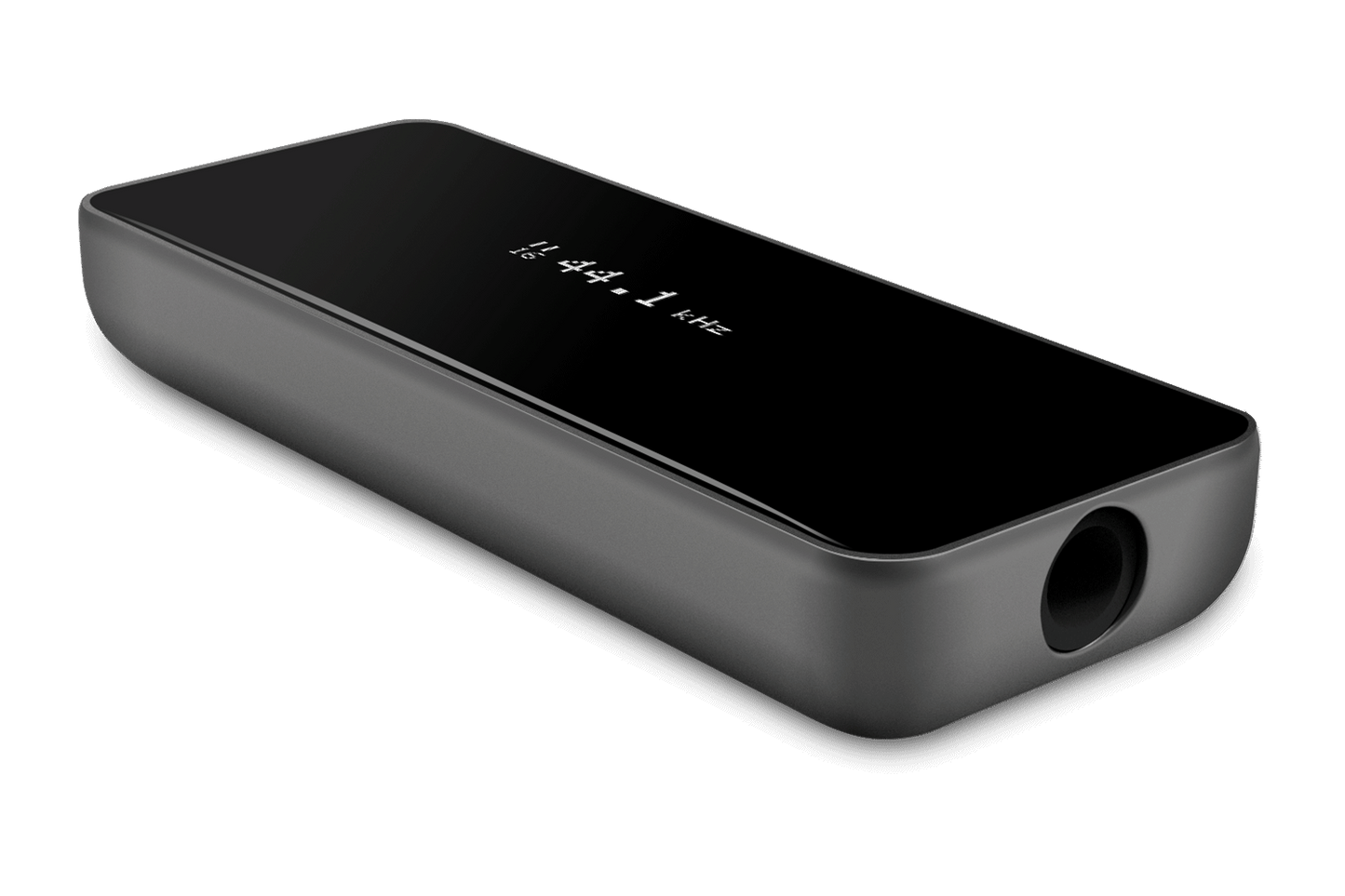
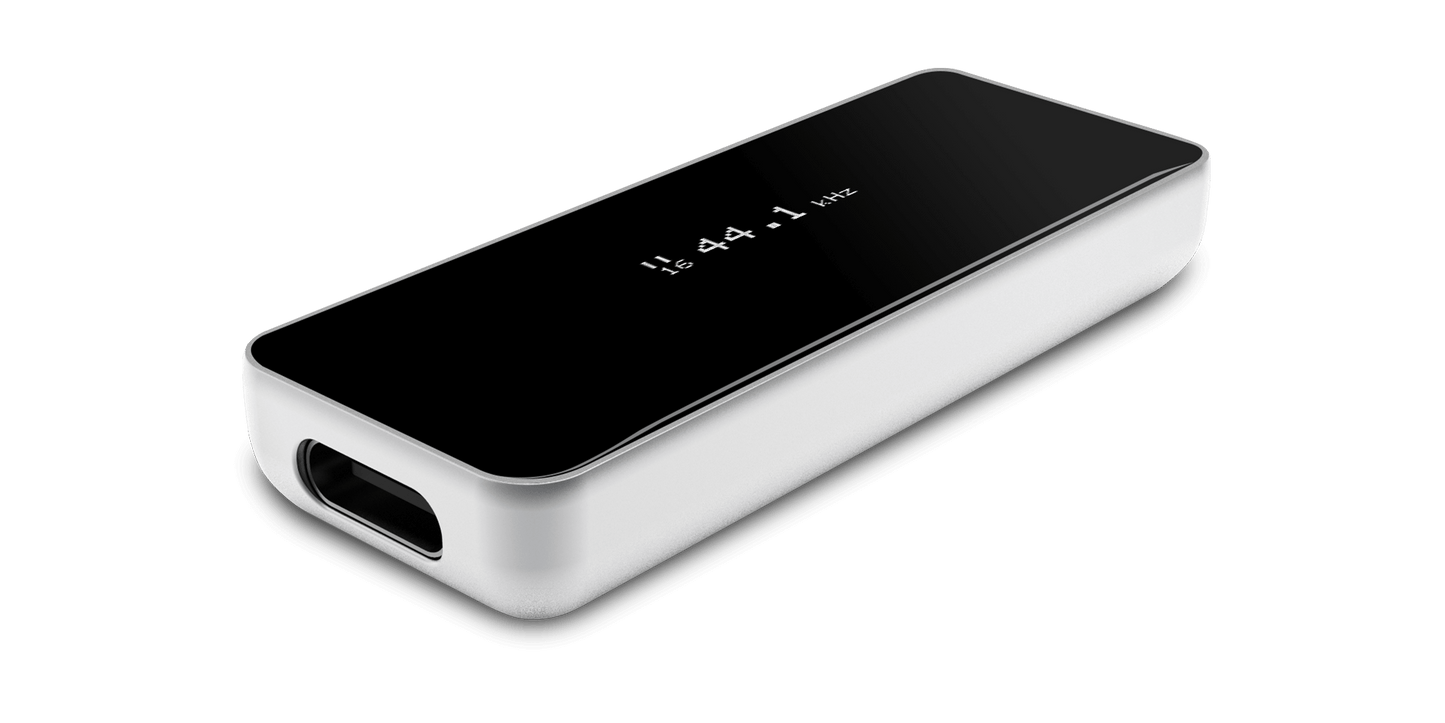
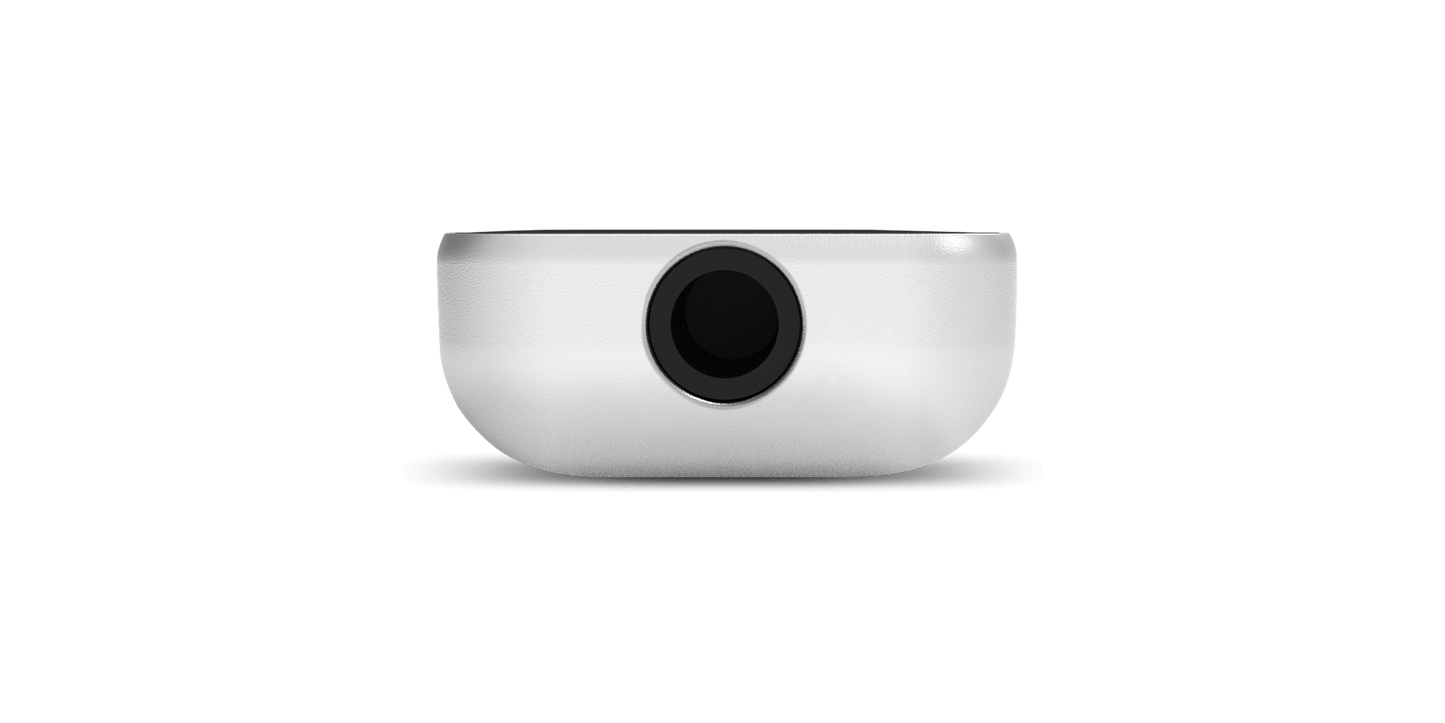
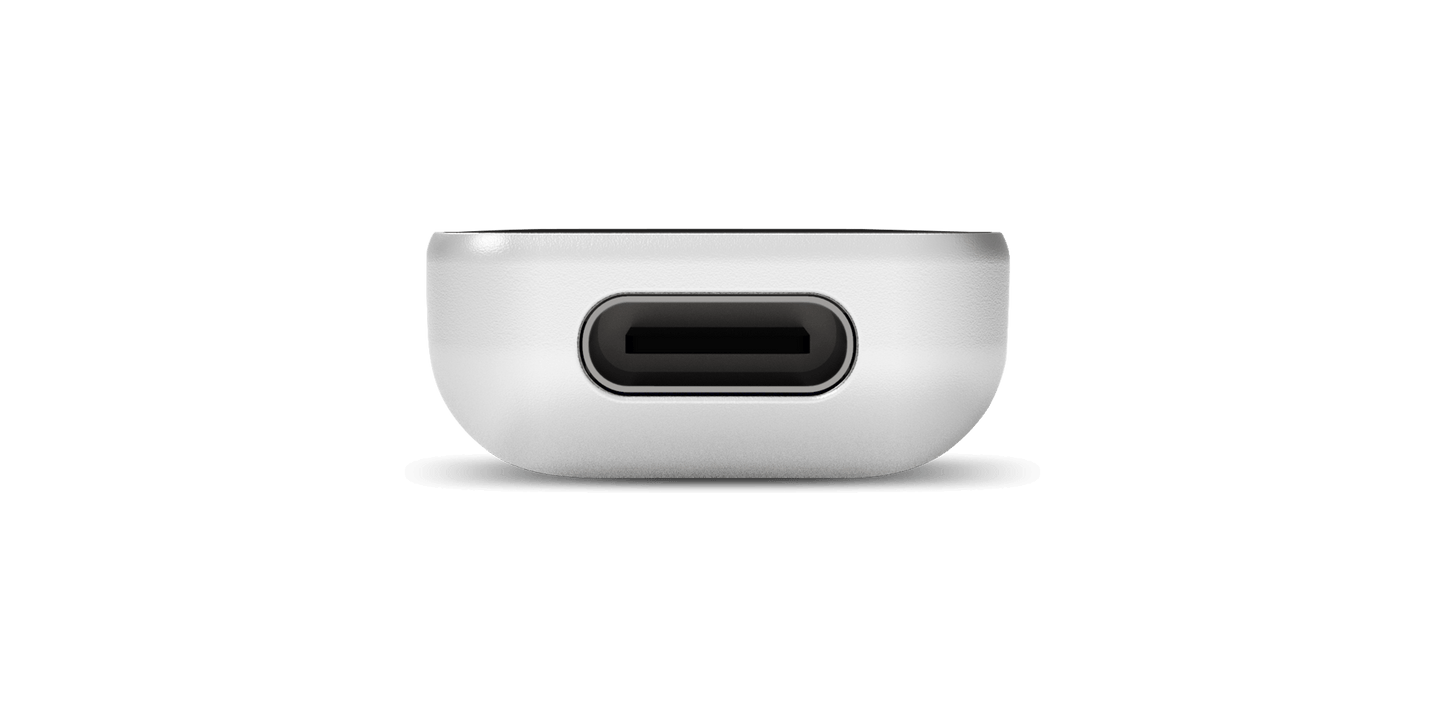
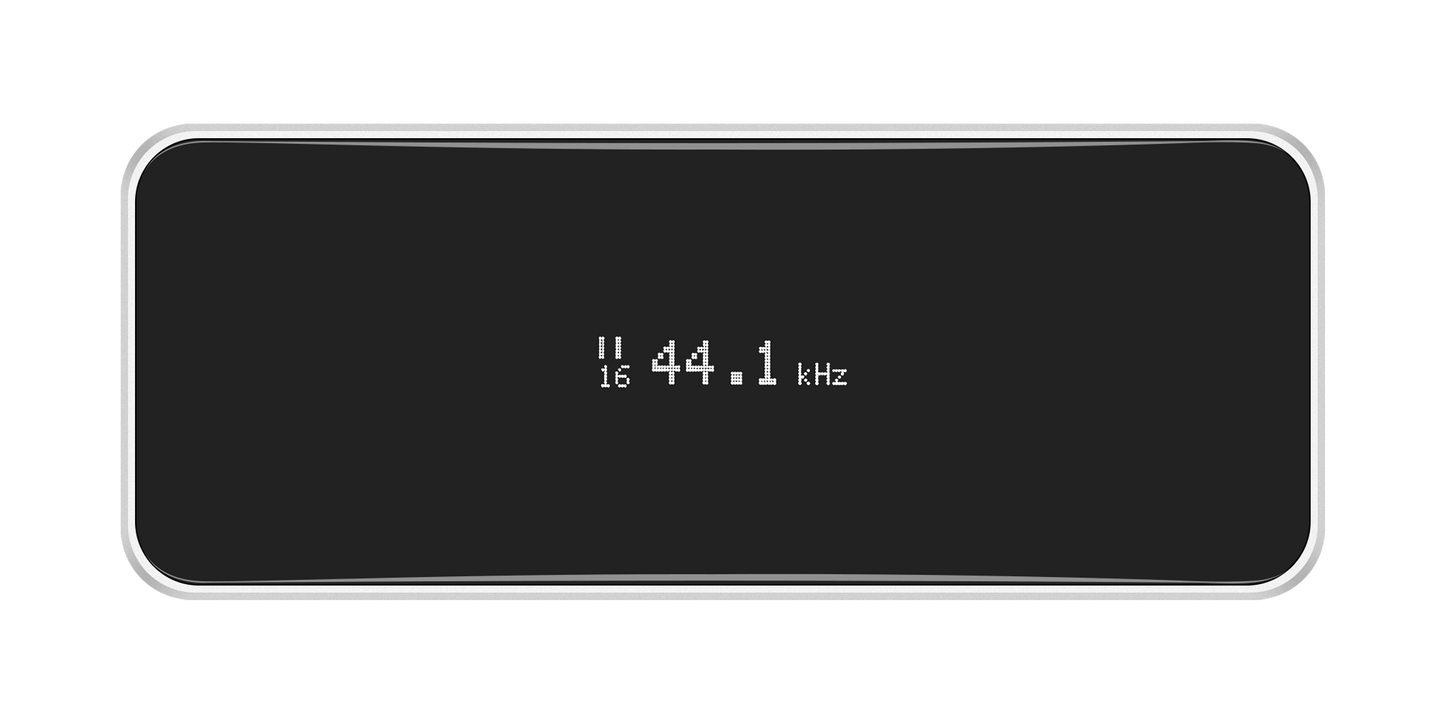
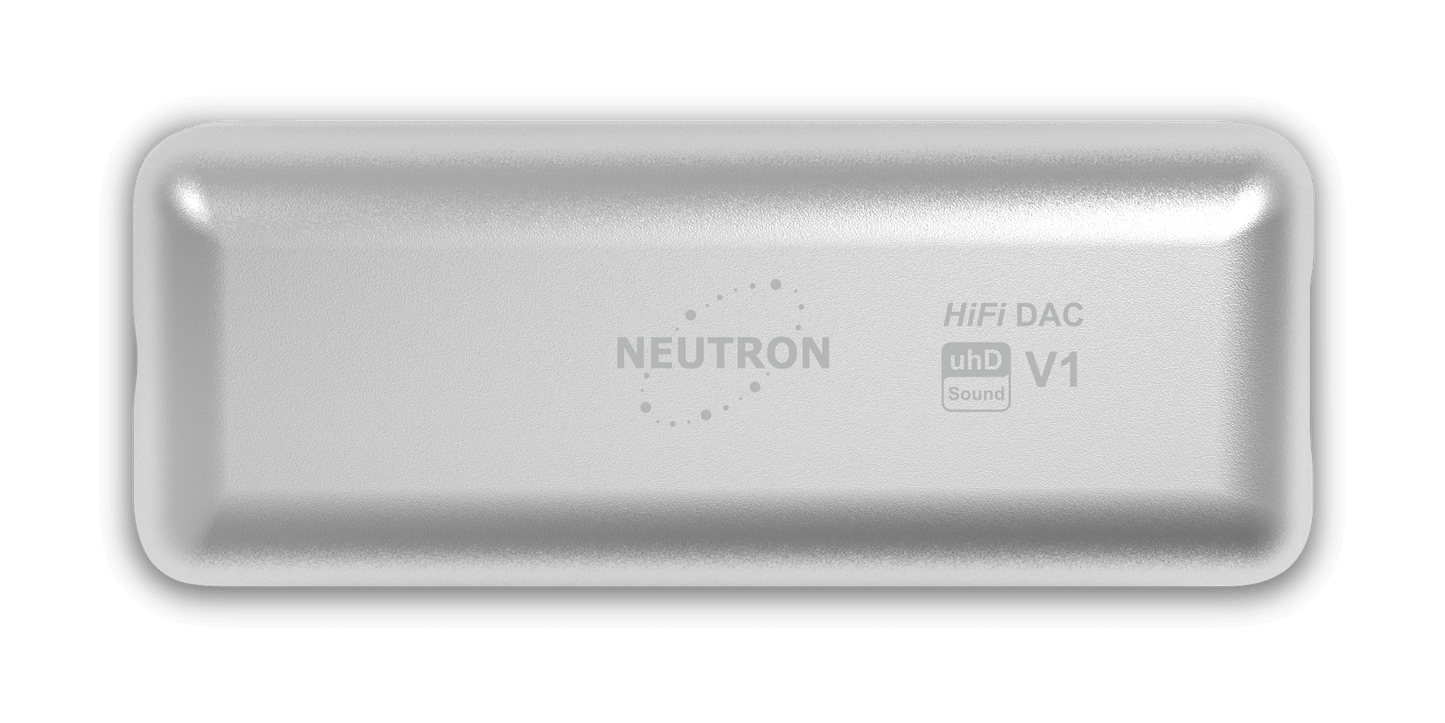
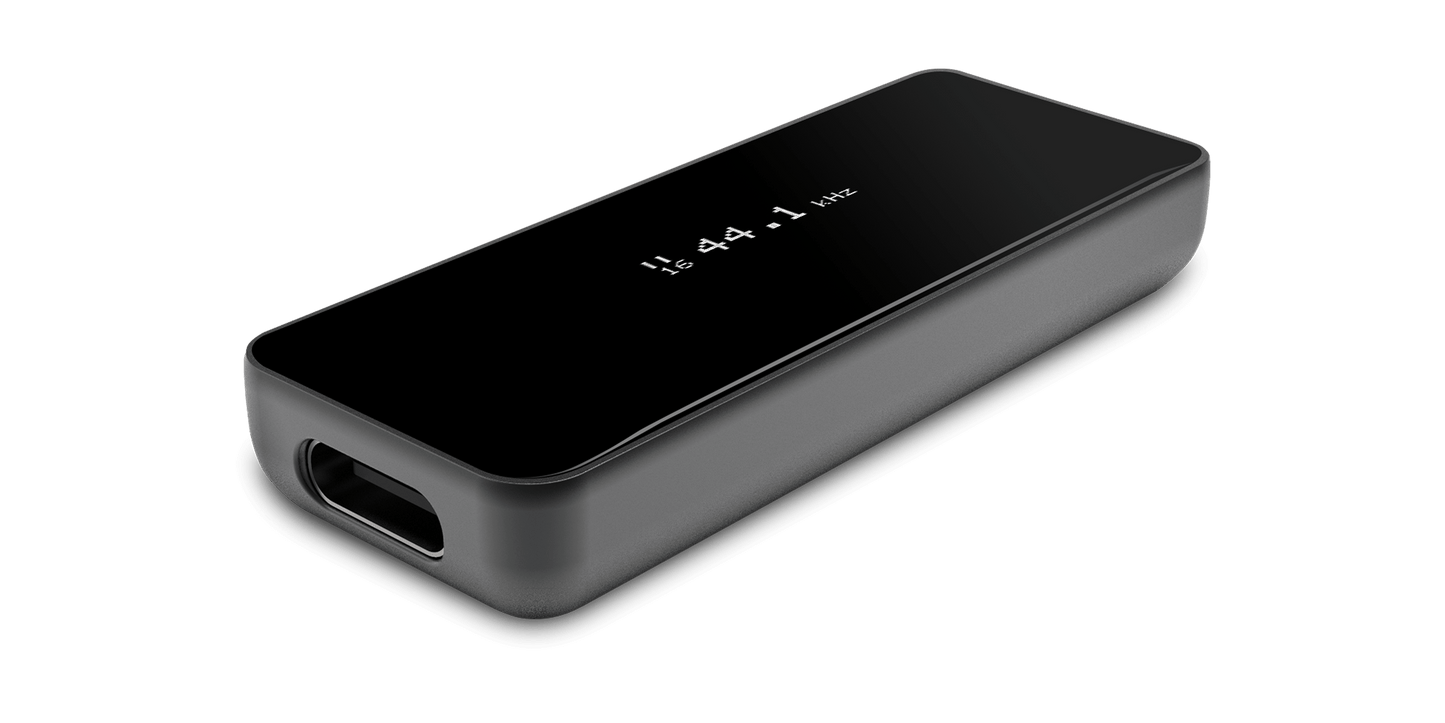
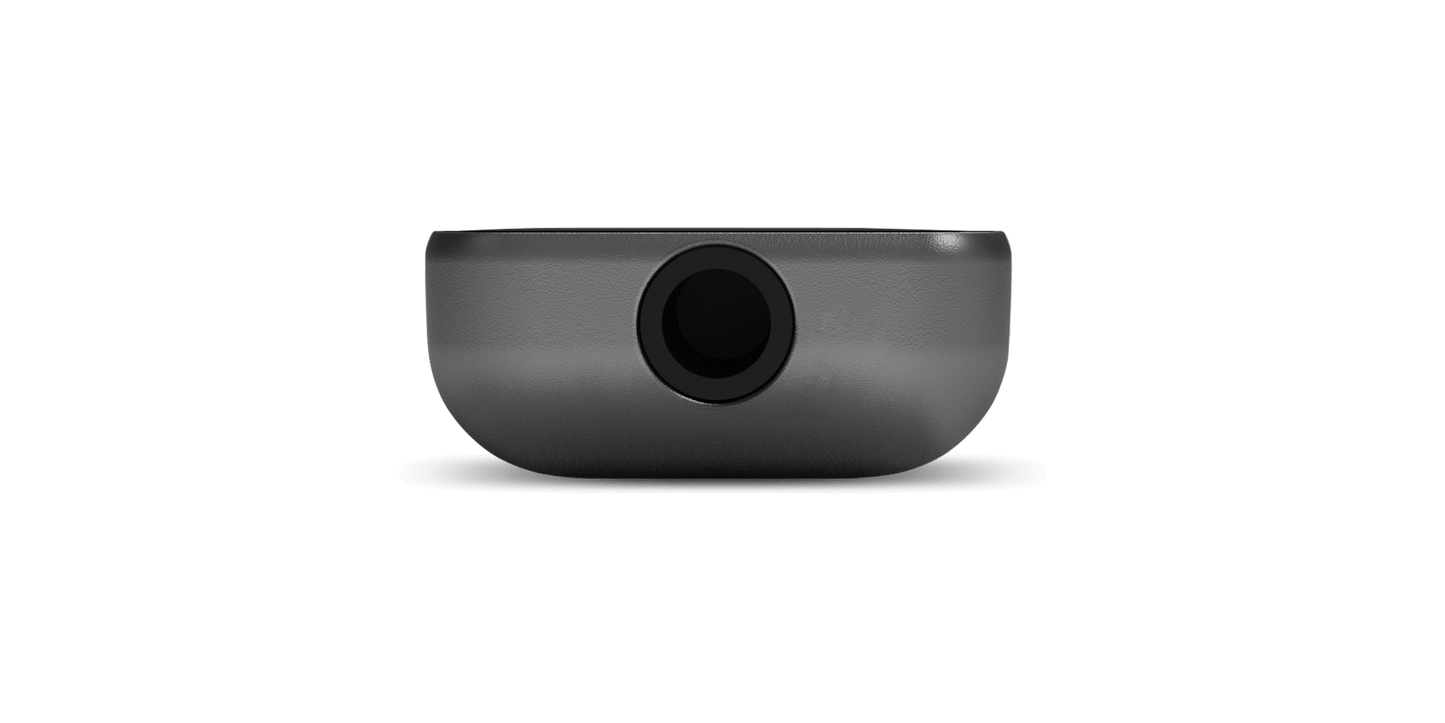
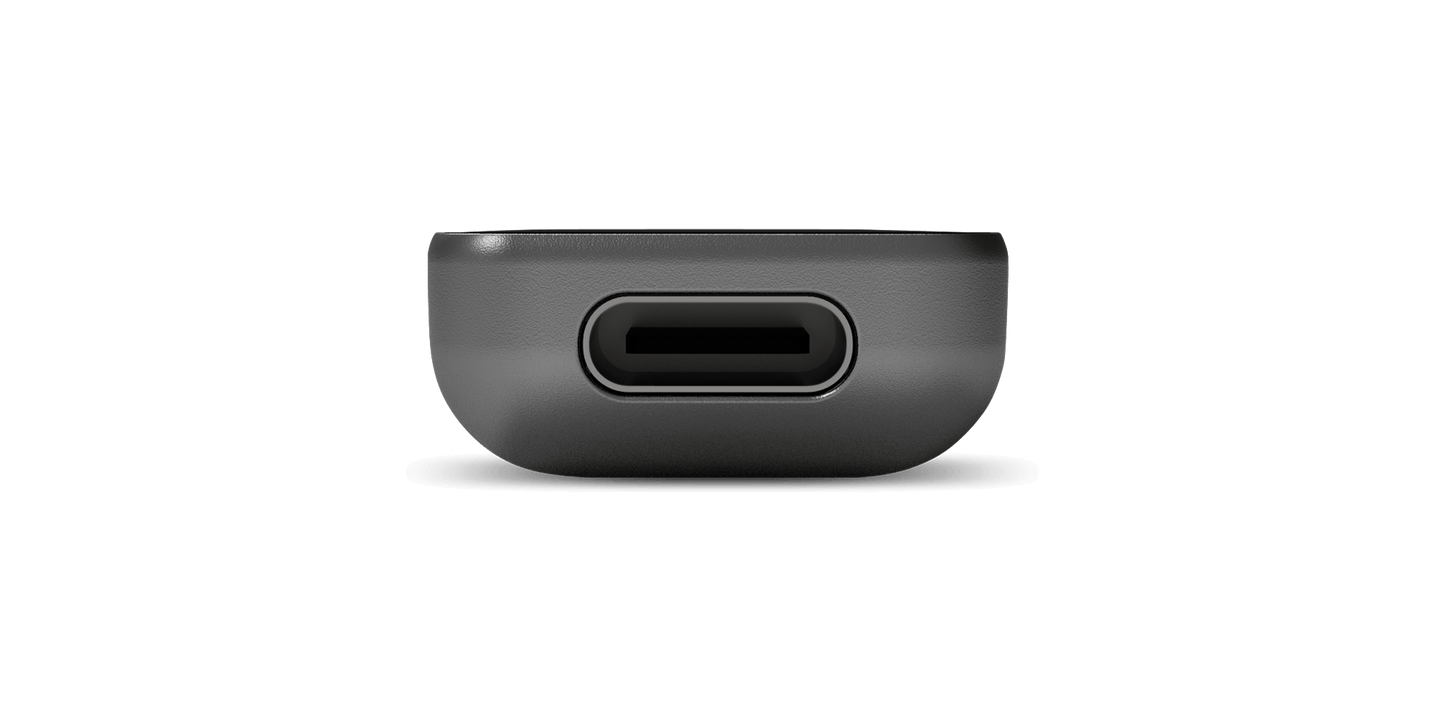
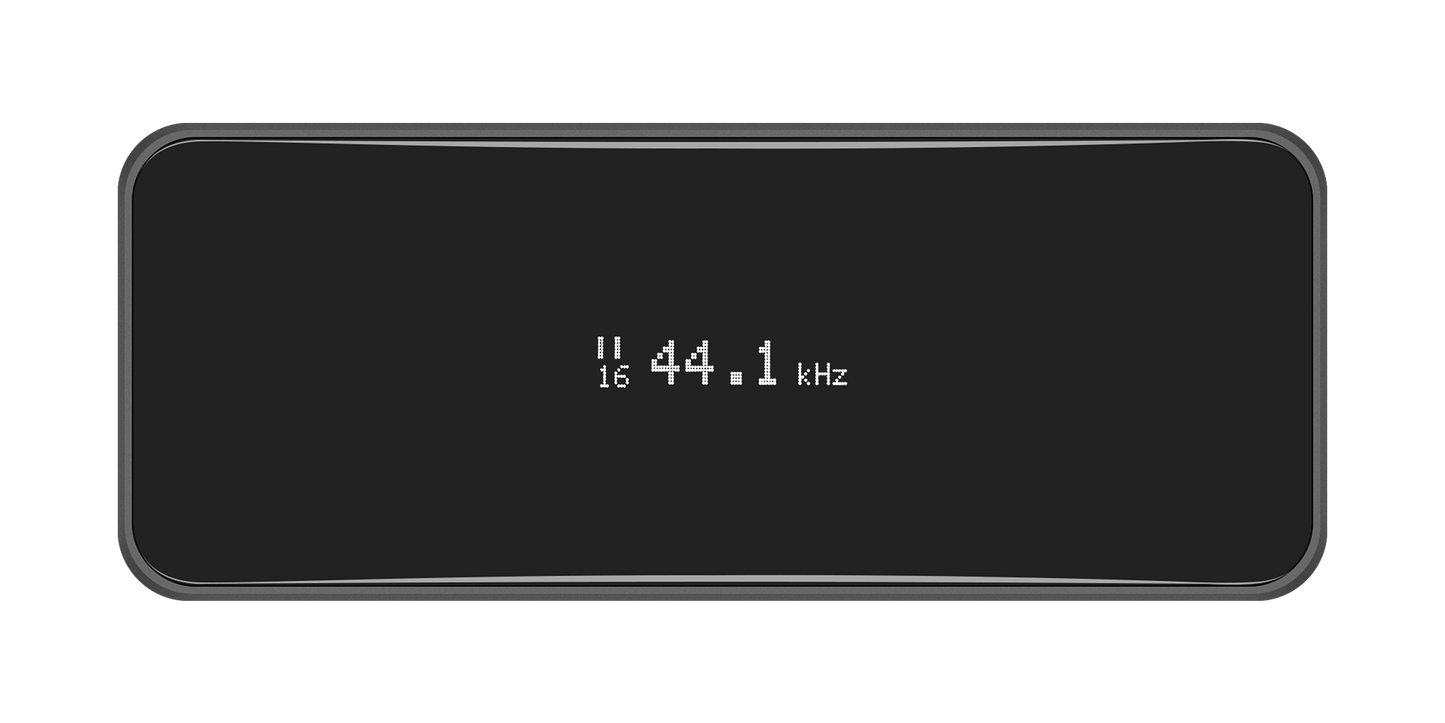
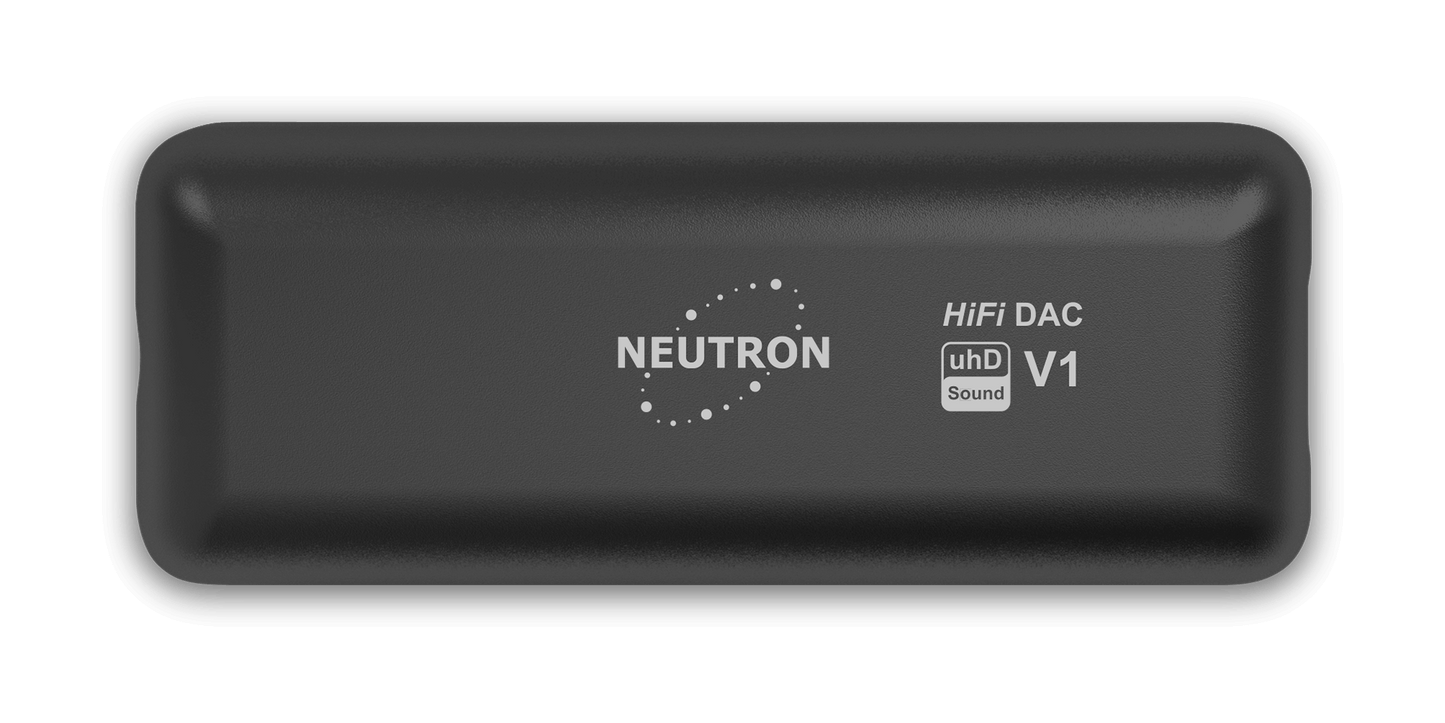
Many devices sound different but few sound better.
This Neutron device made a noticeable improvement in SQ on my system.
Ottimo per pilotare la mia cuffia Grado con un iPhone 16 pro. Il volume è al minimo e si può salire parecchio in volume. Ottimo il vasto database dei profili di equalizzazione per moltissime cuffie.
Grazie mille! ;)
In general dac works ok but it does not switch on everytime I plug it in to the phone. Many times I need to switch off and on again or start tidal again. I had previous dongle dac it worked always perfectly
For technical issues, please contact directly via Contact Form in Neutron HiFi online store so that we could walk though possible causes together and find out whether the problem is related to DAC V1 or not. Review is not the best method for that!
Possible causes can be:
- bad USB cable (worn out or dirty USB-C connector inside, so it can be inserted in a full lenght): have you tried another?
- phone's hardware/software mulfunction: have you tried different phone or PC?
- outdated firmware: have you updated DAC V1 to the latest firmware with NConfigurator?
Please kindly reply to the e-mail sent in relation to the issue you reported here, or just respond via Contact Form.
Once I got it to work, it sounded great. The instruction on how to set it up could do some work on it. It never mentioned it would act like a standard USB to ear piece. In addition, the display showing the music playing, 192Kb would disappear on device. The number of times to work with neutron app would ask to control the device so far a minimum 2 times before it would work.
Best product i ever buy. Excelent sound and features.
